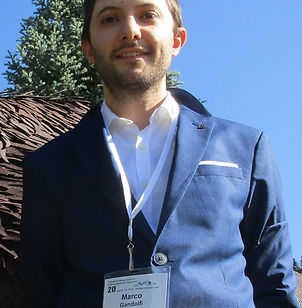
And there was light



According to the dictionary, light is “the natural agent that stimulates sight and makes things visible”, but how can light help us understand the world around us? All our speakers of tonight use light as an important tool in their research. We will learn today how light interacts with matter and how researchers from different fields, from atoms to galaxies, use light in their work.
Light interaction with micro- and nano-particles
Marco Gandolfi
Ph.D. Student
KU Leuven and Università Cattolica del Sacro Cuore
Life is based on light: the Sun's illumination heats up the Earth and provides the energy necessary for photosynthesis. But what is light? How does it interact with matter? We address the light properties and its interaction with matter. We describe the micro- and nano-particles illumination, the latter structures providing interesting optical phenomena, such as sky colour changes during the day, rainbows or coloured glasses, used to create images on church windows. Finally, we revise new technological applications based on light management with micro- and nano-particles.

What's light got to do with it? From atoms to galaxies
Mike Laverick
Ph.D. student
KU Leuven
Atoms are the building blocks of the universe, but how can we use such small objects to understand things as large and as far away as stars and galaxies? The answer: Light. By using our knowledge of the elements and materials around us we can interpret the star light that shines upon us to understand what stars are made of, how old they are, and whether they are suitable candidates for hosting life as we know it!

Twinkle twinkle little star, how I wonder what you are
Cole Johnston
Ph.D student, member of an ERC-funded team
KU Leuven
Simply put, there are countless stars. Yet every year, we build expensive missions to observe more and more of them. New space telescope missions are on track to observe more than 1,000,000,000 stars, despite there being only about 10,000 professional astronomers in the world. The question then becomes, just how do we figure out what all these stars are? Here, I will talk about how astronomers manage to figure out what all these stars are, which ones are the most interesting for detailed investigation, and what we learn from looking at so many in the first place.

.png)
